Overview
We understand that EMR data migration can be a daunting task, but with the right approach, it can lead to significant improvements in operational efficiency. Our article outlines ten best practices that ensure smooth transitions, emphasizing the importance of comprehensive planning, effective data mapping, and rigorous testing. Evidence shows that proper planning and stakeholder involvement can significantly reduce risks during the migration process. By implementing these practices, we can enhance operational efficiency in healthcare organizations, paving the way for a successful transition. Are you ready to take the next step towards a seamless migration?
Introduction
In the rapidly evolving landscape of healthcare technology, the migration of Electronic Medical Records (EMR) is not just a task; it’s a critical endeavor for organizations striving to enhance operational efficiency and patient care.
We recognize that navigating this complexity can be daunting, which is why Avato stands out as a leading hybrid integration platform, specifically designed to facilitate secure and efficient EMR data migration.
By addressing the challenges of connecting fragmented systems and safeguarding sensitive health data, we streamline the migration process while reinforcing compliance with stringent regulatory standards.
As healthcare institutions increasingly adopt cloud-first strategies, the significance of robust data migration practices becomes paramount.
This article delves into essential strategies for successful EMR data migration, exploring the role of comprehensive planning, effective data mapping, and rigorous testing.
We will underscore the importance of Avato’s innovative solutions in guiding you through this intricate journey.
What’s holding your team back from achieving seamless EMR migration? Let’s explore how we can support you in overcoming these challenges.
Avato: Secure Hybrid Integration Platform for EMR Data Migration
We present a top-tier hybrid integration solution, uniquely designed to facilitate secure and efficient EMR transfer. Our advanced technological foundation enables organizations to seamlessly connect disconnected networks, ensuring the secure transfer of sensitive health information. With key attributes like real-time monitoring and alert systems, we significantly reduce the risks associated with information transfer, making our solution ideal for healthcare organizations aiming to enhance operations while adhering to stringent security and compliance standards.
In 2025, the recommended methods for secure EMR information transfer emphasize the importance of utilizing integration platforms like ours to bolster information integrity and minimize downtime. Given that the average cost of a cloud breach has soared to $3.86 million, the need for robust security measures is more critical than ever. Our secure hybrid integration platform not only aids in compliance with healthcare regulations but also supports organizations in achieving higher success rates for information transfer.
A growing trend reveals that 47% of organizations are adopting a cloud-first strategy for new applications, highlighting the increasing reliance on hybrid integration solutions within the healthcare sector. This trend is corroborated by findings from the Google Cloud Brand Pulse Survey, indicating that 54% of global tech and business leaders prioritize cloud service providers capable of identifying technology strategies that enhance revenue or reduce costs.
Experts assert that following EMR data migration best practices by leveraging our hybrid integration platform can significantly improve the efficiency of EMR information transfer projects, allowing healthcare providers to access information and systems within weeks instead of months. This agility is crucial in a landscape where timely access to accurate health information can directly impact patient care and operational effectiveness.
Furthermore, the misconfiguration of cloud services remains a primary cause of breaches, underscoring the importance of our security functions in mitigating such risks by following EMR data migration best practices during information transfer. Our commitment to delivering secure and reliable integration solutions positions us as a leader in the healthcare information transfer sector, addressing the unique challenges faced by IT managers in ensuring secure and efficient information handling.
Establish a Comprehensive Migration Plan
Creating a thorough transfer strategy that aligns with EMR data migration best practices is essential for the success of any information relocation effort, particularly in healthcare environments. We recognize that this plan must clearly outline the scope, objectives, and timeline for the transition process. A detailed inventory of the data to be migrated, the systems involved, and the necessary resources is crucial. Additionally, recognizing possible risks and formulating mitigation plans is imperative to ensure that all parties are synchronized on expectations and responsibilities during the transition process.
Statistics reveal that approximately 70% of organizations fail in their IT projects due to inadequate migration planning. This underscores the necessity of a well-structured approach. As Ernest Dimnet aptly stated, “Our potential for innovation, problem-solving, and growth is only as good as the information we gather and, most importantly, utilize.” This highlights the vital role that efficient information management plays in attaining success.
Consider the case study involving UMass Memorial Health Care, which illustrates the challenges encountered when enhancing their obsolete information storage infrastructure. The organization needed to transfer over a petabyte of information while ensuring that critical operations continued without disruption. This successful transition not only improved their data management capabilities but also facilitated the provision of outstanding healthcare services, demonstrating the significance of a thorough transition strategy.
Looking ahead to 2025, the EMR data migration best practices for developing a comprehensive transition plan involve:
- Engaging all relevant stakeholders early in the process
- Ensuring clear communication
- Establishing realistic timelines
Furthermore, utilizing Avato’s hybrid integration platform can streamline the integration of various components, boosting business value and guaranteeing regulatory compliance. By adhering to these guidelines and employing schemas to handle information efficiently, we can help healthcare organizations navigate the complexities of EMR integration and information migration more effectively, ultimately leading to smoother transitions and enhanced operational efficiency by following EMR data migration best practices.
Implement Effective Data Mapping Strategies
We recognize that executing efficient EMR data migration best practices is crucial for seamless transitions. Understanding how the information fields in the old EMR relate to those in the new system is essential for implementing EMR data migration best practices. By creating a mapping document that outlines each element’s source and destination, we implement EMR data migration best practices that lay the groundwork for success.
Furthermore, utilizing XSLT is one of the EMR data migration best practices that can significantly enhance this process by automating the transformation of XML structures, reducing effort and minimizing programming mistakes. In addition, incorporating schemas during this phase is crucial to EMR data migration best practices, as it not only ensures information integrity but can also lead to substantial cost savings by catching mistakes early in the coding process.
What’s holding your team back from adopting these best practices? By employing automated tools in accordance with EMR data migration best practices, we can improve precision and productivity, thereby diminishing the chances of information loss or misalignment during the transfer process.
As a result, we invite you to consider how these strategies can transform your approach. Let us partner with you to navigate this complexity and deliver clarity in your information mapping efforts.
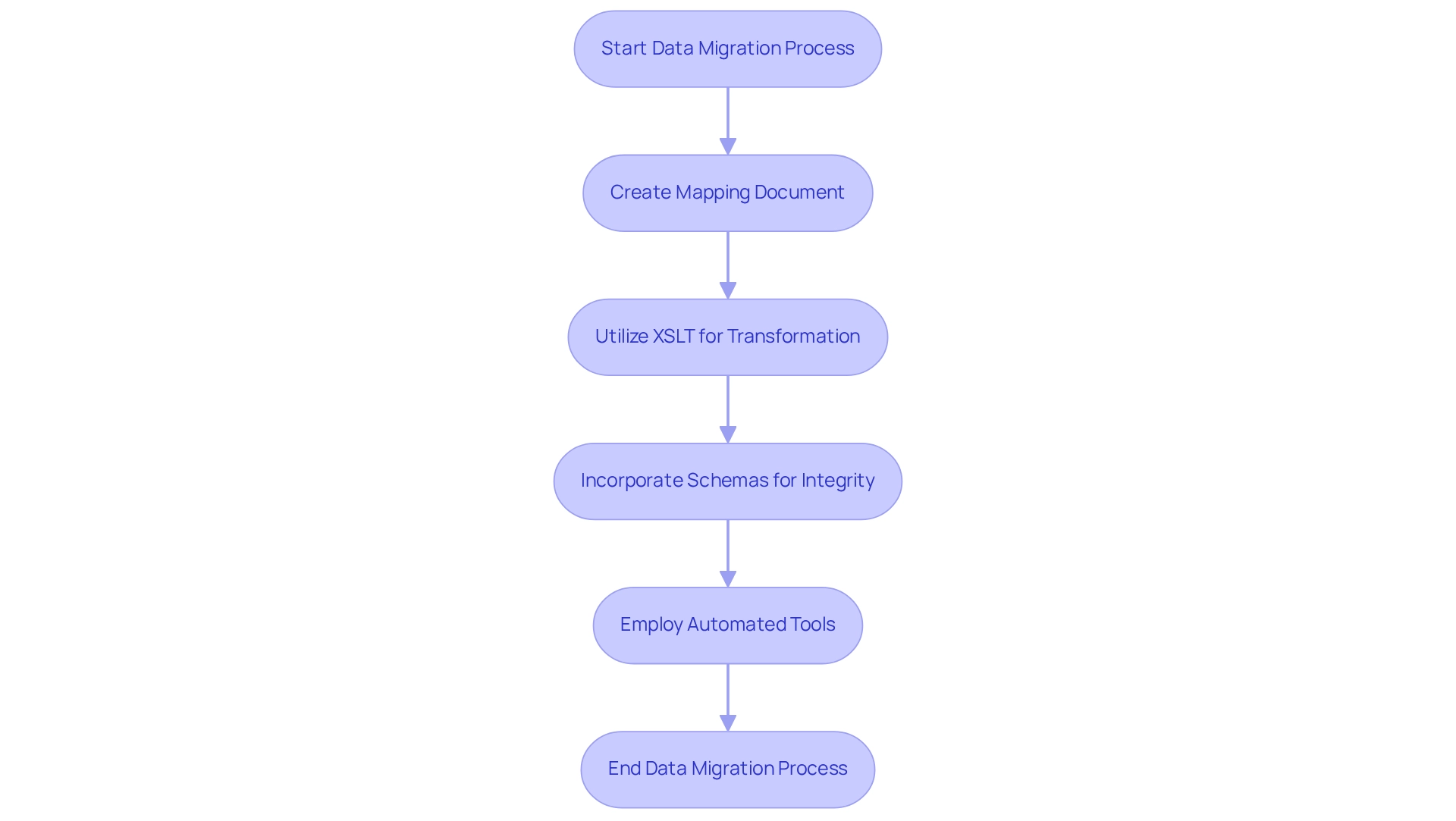
Conduct Thorough Data Cleaning Prior to Migration
Before we migrate, adhering to EMR data migration best practices is imperative, which includes conducting a thorough cleaning process to identify and rectify any inaccuracies, duplicates, or irrelevant information. By utilizing XSLT, a robust declarative programming language, we can significantly enhance this process through the automation of XML structure transformation and extraction. This approach may involve:
- Standardizing information formats
- Removing outdated records
- Validating the accuracy of existing details via schemas, which help catch programming errors early and ensure compliance
By guaranteeing that only pristine information is transferred, we can improve the overall quality and dependability of our new EMR platform, adhering to EMR data migration best practices. Ultimately, this leads to significant cost savings and enhanced information integrity. What could be more critical than ensuring that our data is flawless as we move forward?
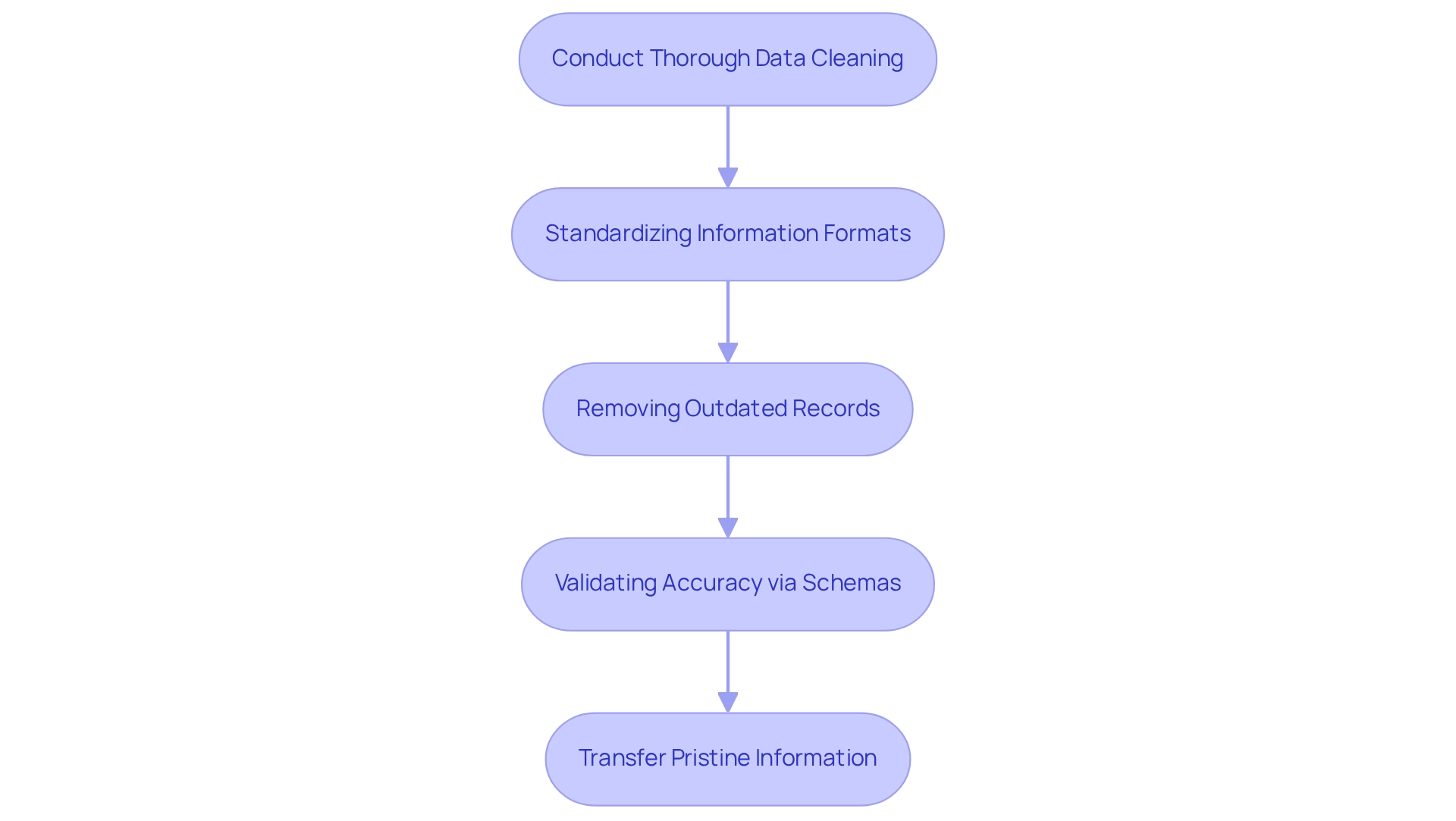
Perform Rigorous Testing of the New EMR System
Carrying out thorough testing of the new EMR platform is not just important; it is essential to ensure that all functionalities operate effectively and that data transfers are precise. This process must encompass:
- Unit testing
- Integration testing
- User acceptance testing (UAT)
Engaging end-users in the testing phase proves particularly beneficial, as it allows us to gather valuable feedback and identify potential issues before full implementation. For instance, a case study revealed a workflow support mismatch in EHRs, where a physician’s lab test instructions were invisible to lab staff due to a disconnect between the EHR workflow and the clinician’s intent. This underscores the necessity of aligning EHR workflows with user needs to facilitate effective communication of clinical instructions, emphasizing the importance of user acceptance testing.
Furthermore, investing in comprehensive training programs is crucial to ensure our staff feels comfortable with the new platform. Implementing effective change management strategies will smooth the transition and foster a culture of innovation within our organization. Continuous training and assistance after implementation are vital for maximizing usage and integrating new team members, ensuring that the platform adapts to the evolving needs of healthcare settings. As noted by Seppo T. Rinne, MD, PhD, ‘The transition will be an ongoing process,’ highlighting the need for continuous testing and support.
By prioritizing these rigorous testing methods and implementing comprehensive training and change management strategies in accordance with EMR data migration best practices, we can significantly enhance the success rates of our EMR migrations, ultimately leading to smoother transitions and improved operational efficiency. Additionally, we must consider the regulatory landscape, as ONC has indicated that it will not update the 2015 Edition of EHR certification requirements, which can impact our integration process.
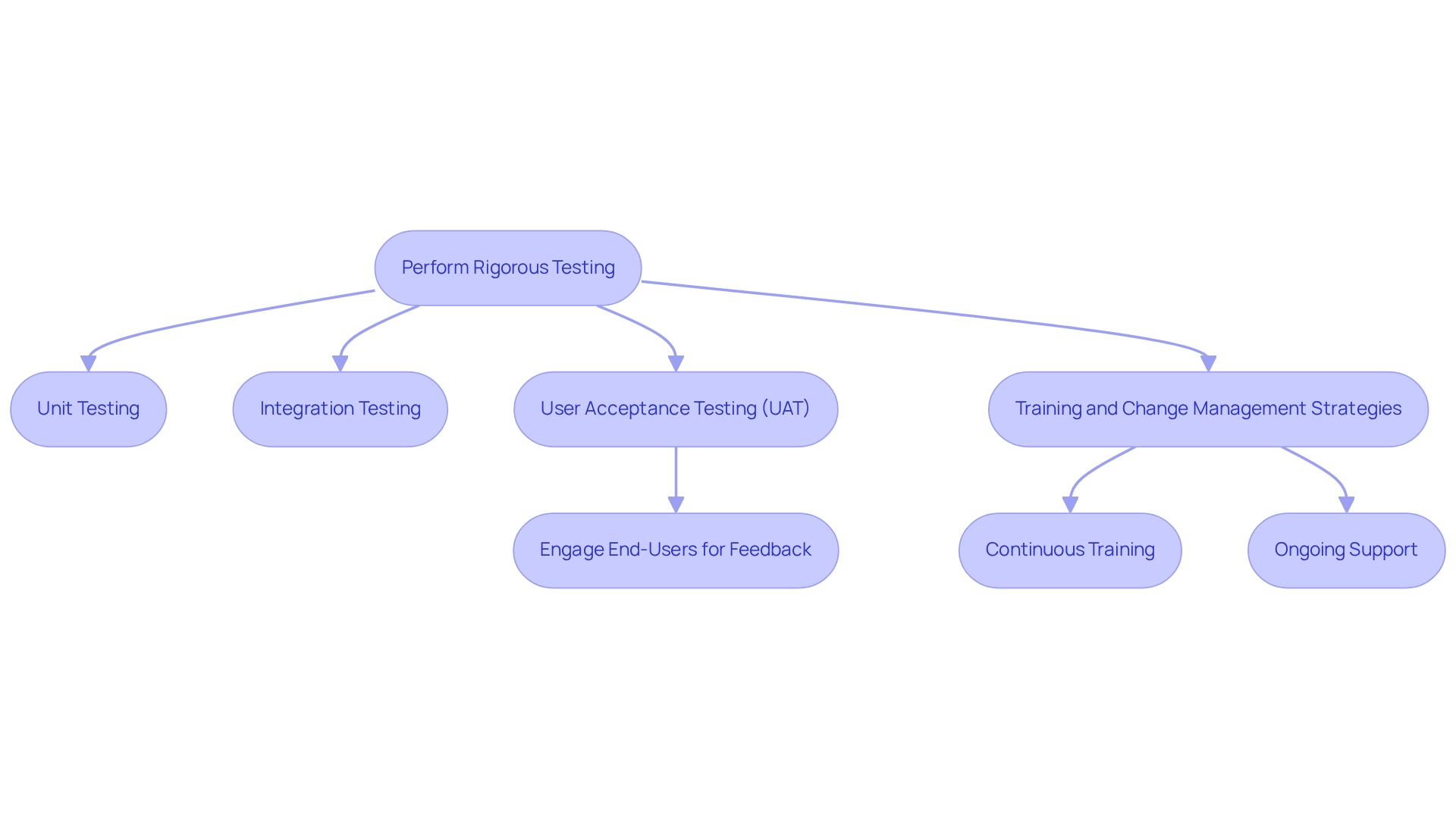
Provide Comprehensive Training for Staff
We understand that offering thorough training for our personnel is essential to ensure they feel at ease and skilled with the new EMR platform. It is imperative that we invest in tailored training programs that cater to the different roles within our organization, focusing specifically on the functionalities each group will utilize. Furthermore, implementing change management strategies will help us smooth the transition and foster a culture of innovation.
What’s holding your team back? By considering a combination of:
- Hands-on training
- Online resources
- Ongoing support
we can facilitate a smooth transition and encourage user adoption. Let’s take this step together to empower our teams and enhance our operational efficiency.
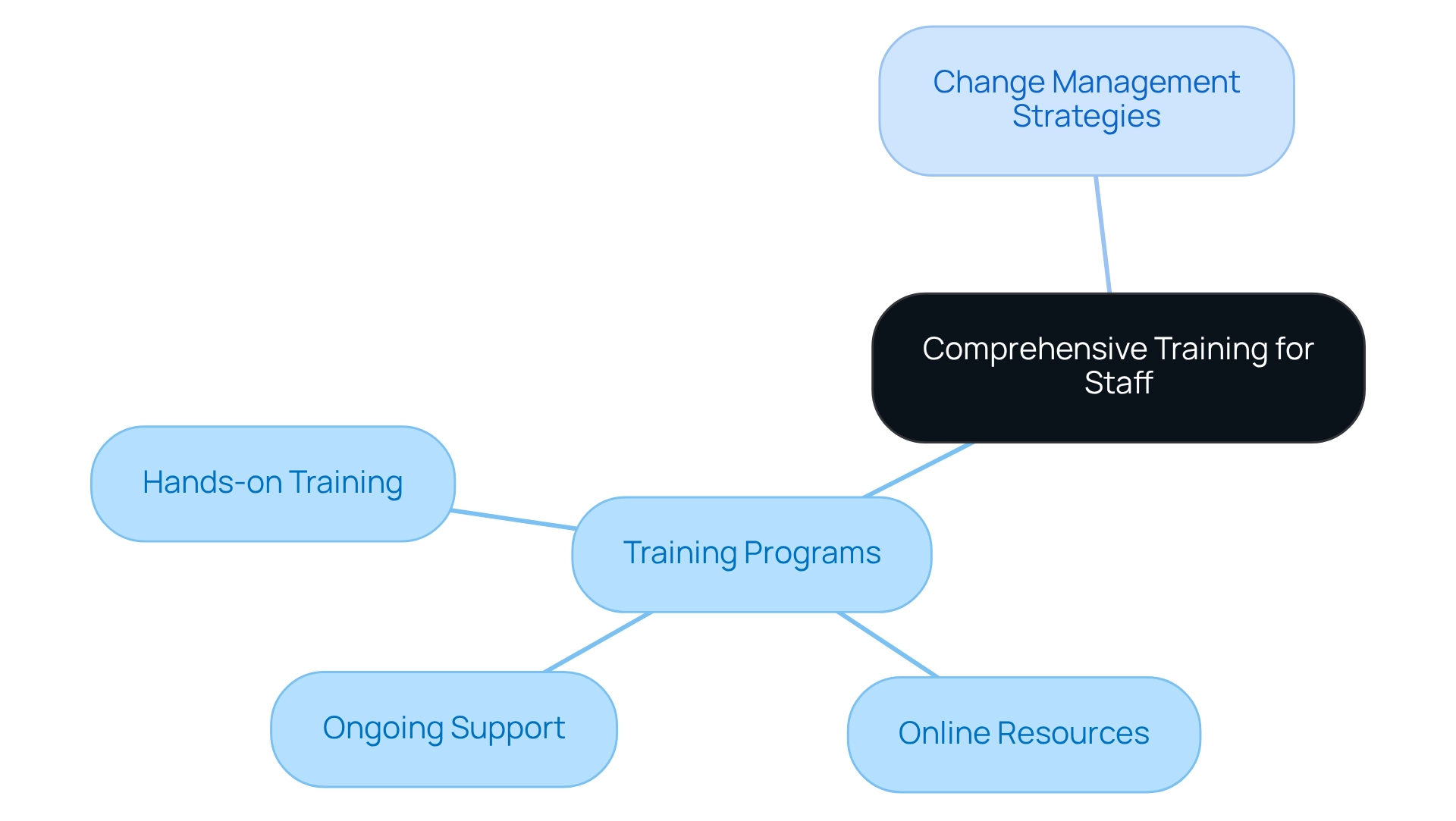
Establish Robust Post-Migration Support
Establishing robust post-migration support is essential for ensuring user success with our new EMR platform. We create a dedicated team to assist users with any issues they may encounter after implementation. Our Expert Integration Services guarantee that this support is bolstered by proficient integration partners who are available when needed, offering:
- Troubleshooting assistance
- Regular updates
- A comprehensive feedback mechanism for users to report issues or propose enhancements
This customer-focused strategy not only helps preserve user trust but also ensures that the system remains efficient over time, backed by our global proficiency in information and systems integration. How can we assist you in maximizing your experience with our platform?
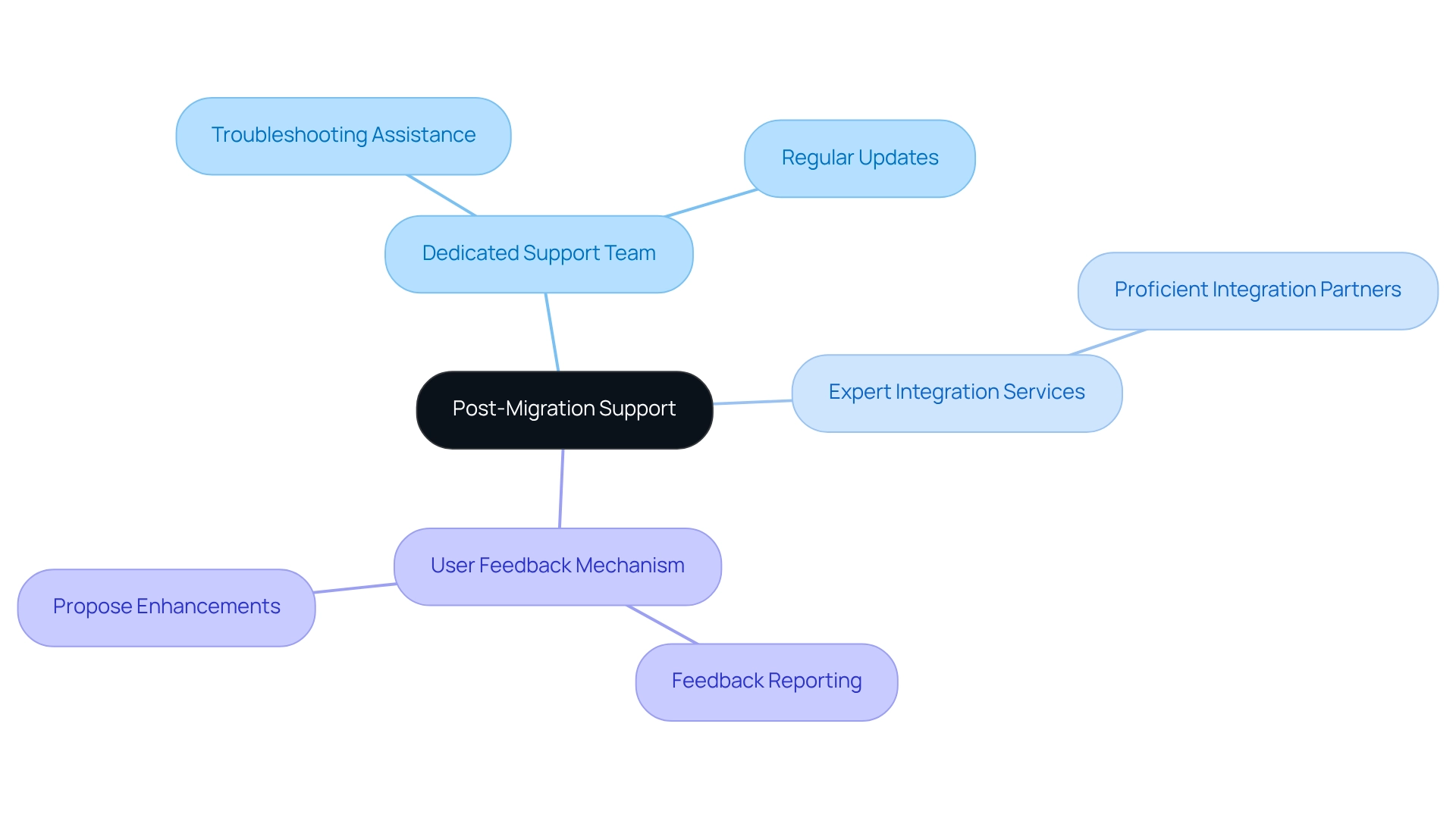
Ensure Compliance with Regulatory Standards
Ensuring compliance with all relevant regulatory standards, such as HIPAA and GDPR, is not just necessary—it is imperative. We must implement robust data protection measures, conduct regular audits, and maintain comprehensive documentation that demonstrates our adherence to these standards.
What potential risks could we overlook without the involvement of legal and compliance specialists during this transition? Their expertise is crucial in recognizing these risks and ensuring that all required protocols are meticulously followed.
By prioritizing compliance, we not only safeguard our operations but also build trust and credibility with our stakeholders.
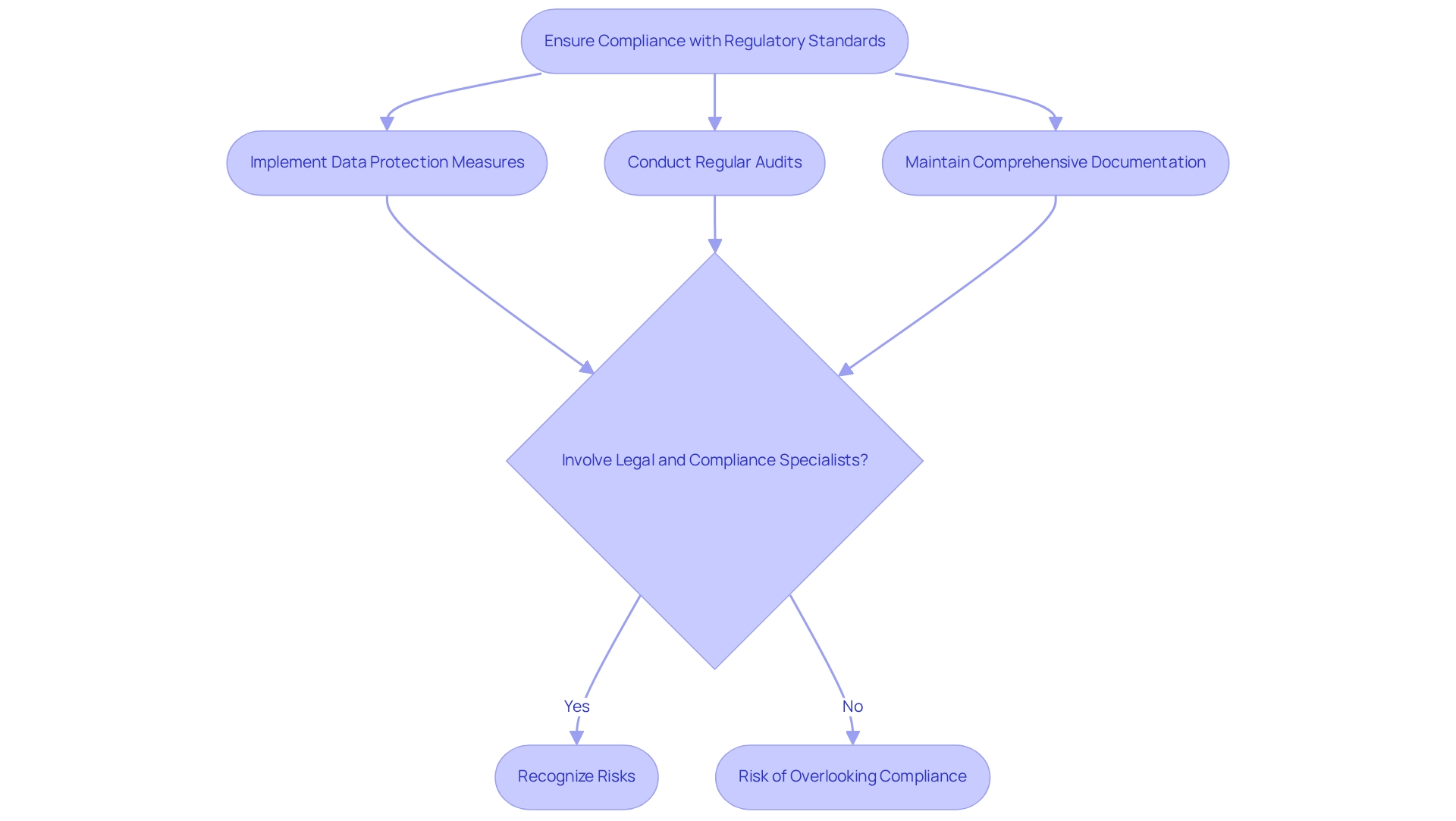
Involve Stakeholders in the Migration Process
Engaging stakeholders in the transition process is essential for ensuring that our new EMR system meets the needs of all users. We must involve:
- Healthcare providers
- Administrative staff
- IT personnel
in discussions about the transition plan, data mapping, and training requirements. By leveraging project management and business analysis services, we can enhance effective communication and collaboration among stakeholders. Regular feedback sessions will enable us to address concerns and foster a sense of ownership, ultimately leading to a more successful implementation. Furthermore, stakeholders can utilize our expertise to streamline the transition process, ensuring that all perspectives are considered and integrated.
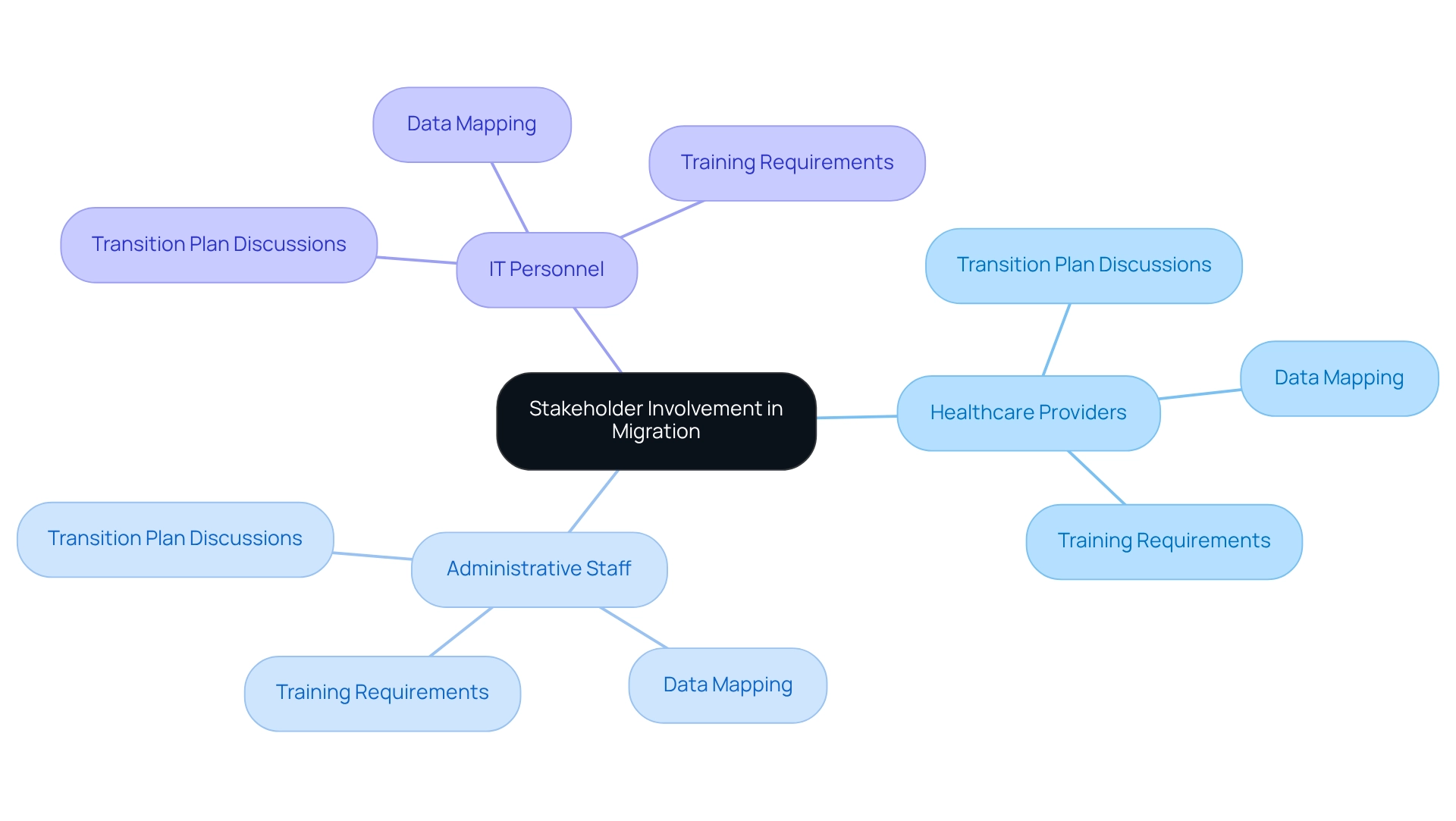
Implement Real-Time Monitoring During Migration
Implementing real-time monitoring during the transition process is not just beneficial; it is essential for promptly identifying and resolving issues. By employing advanced monitoring tools, we can effectively track transfer rates, performance, and error rates. Our Hybrid Integration Platform streamlines complex integrations, enabling our dedicated team to manage the transfer in real-time and respond swiftly to challenges, significantly reducing the risk of information loss or system downtime.
Statistics reveal that organizations utilizing real-time monitoring identify up to 30% more problems during transfers, underscoring its critical importance. By prioritizing real-time monitoring with Avato’s Hybrid Integration Platform, we empower healthcare organizations to follow EMR data migration best practices, facilitating smoother transitions and enhancing the overall integrity of their data migration efforts.
What’s holding your team back from achieving seamless integration? Let us guide you through this process.
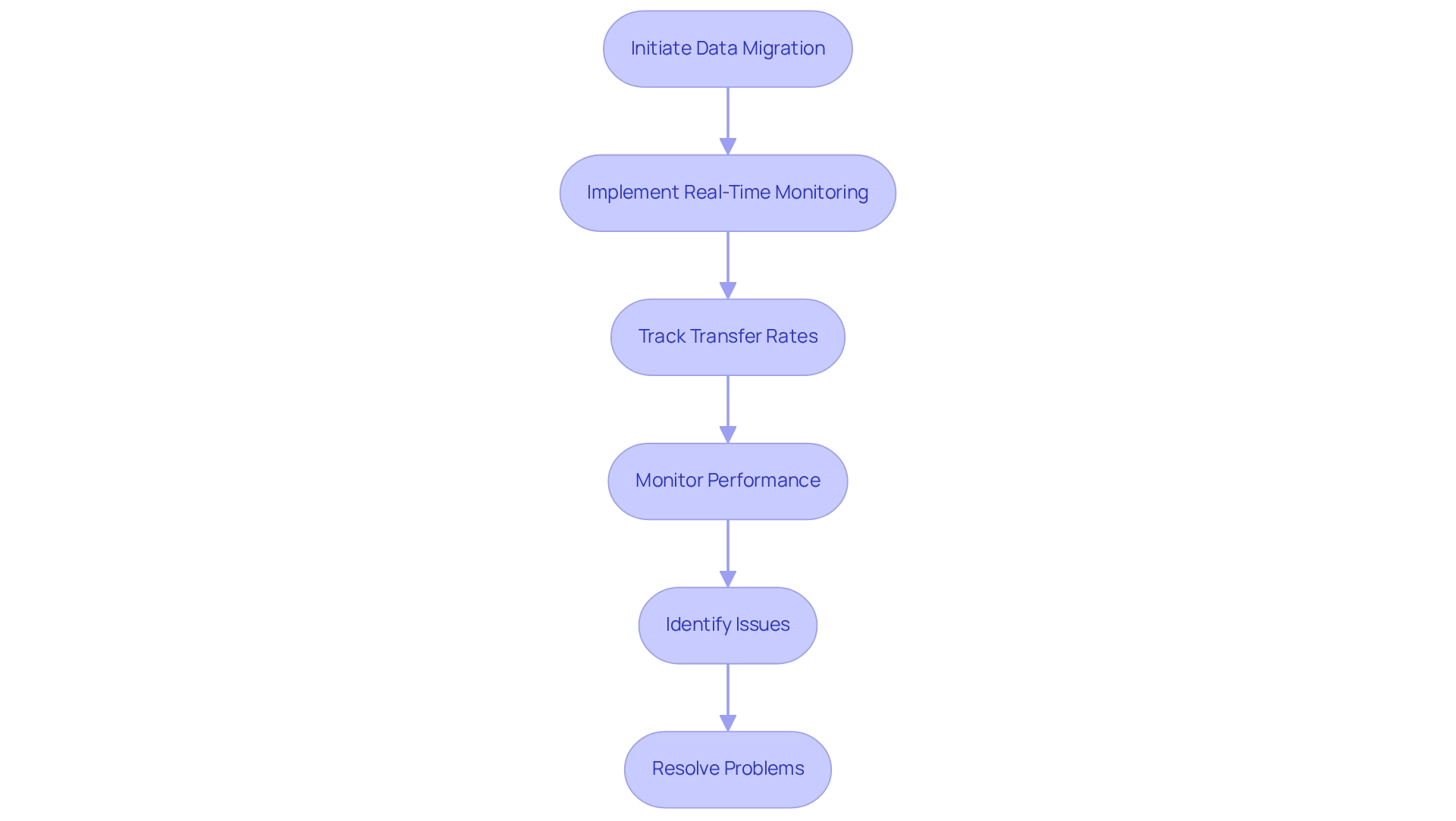
Conclusion
The journey of EMR data migration is undeniably complex, yet it is essential for healthcare organizations striving to enhance operational efficiency and patient care. By leveraging our secure hybrid integration platform, we enable institutions to navigate this intricate process with confidence, ensuring that sensitive health data is protected and that compliance standards are met.
To achieve successful migration, we advocate for:
- Establishing a comprehensive plan
- Implementing effective data mapping
- Conducting thorough data cleaning
These steps are vital in minimizing risks and ensuring data integrity. Furthermore, rigorous testing and comprehensive staff training are essential to optimize the functionality of the new EMR system and promote user adoption. With a robust post-migration support framework in place, we empower organizations to maintain system effectiveness and adapt to evolving healthcare demands.
Ultimately, the integration of advanced technologies and strategic planning not only streamlines the migration process but also positions healthcare organizations to thrive in a cloud-first landscape. As the sector continues to evolve, embracing these best practices will lead to successful EMR migrations that enhance the quality of care and operational success. Now is the time for us to act and ensure that our organization is equipped to meet the challenges of EMR data migration head-on.

